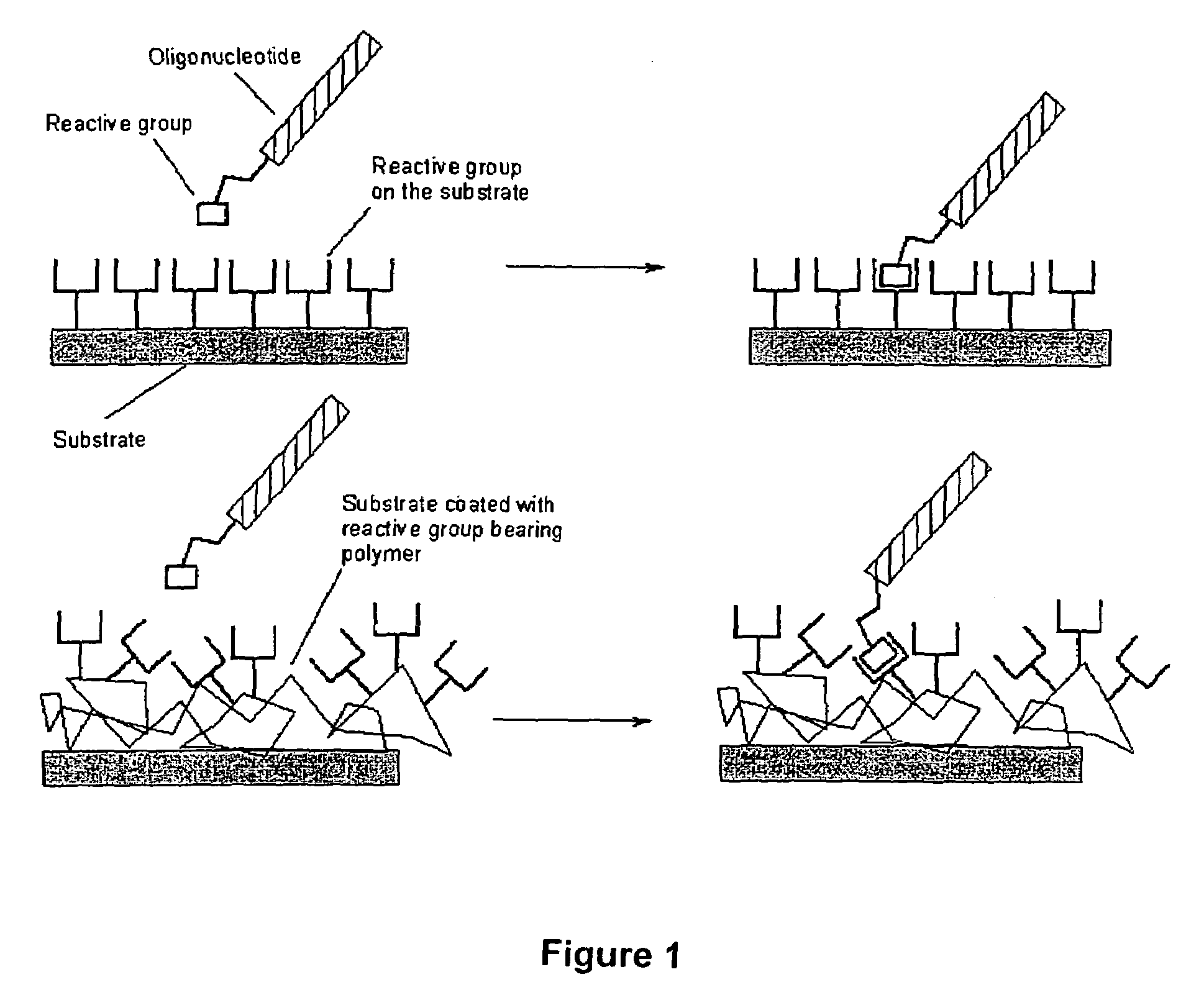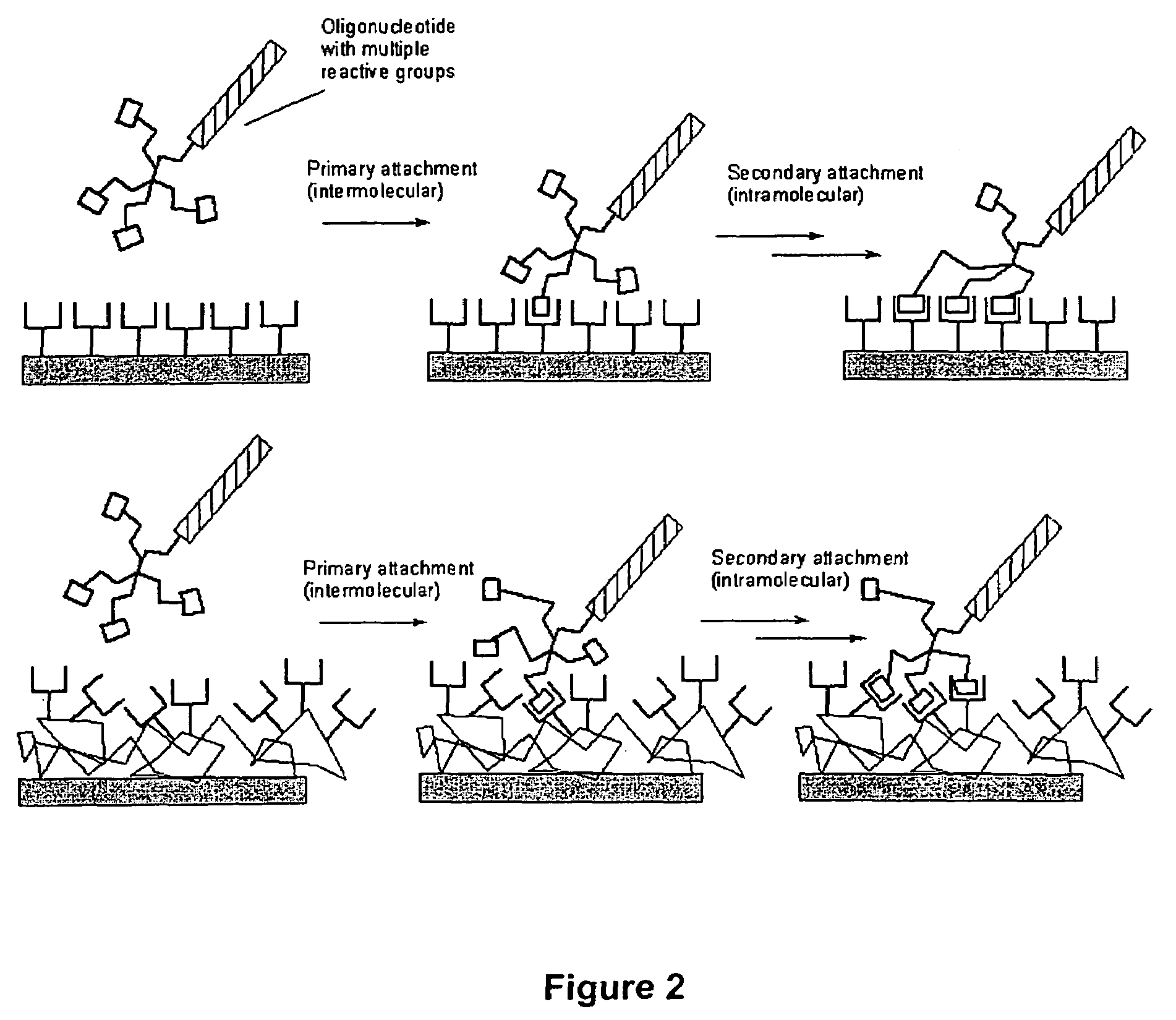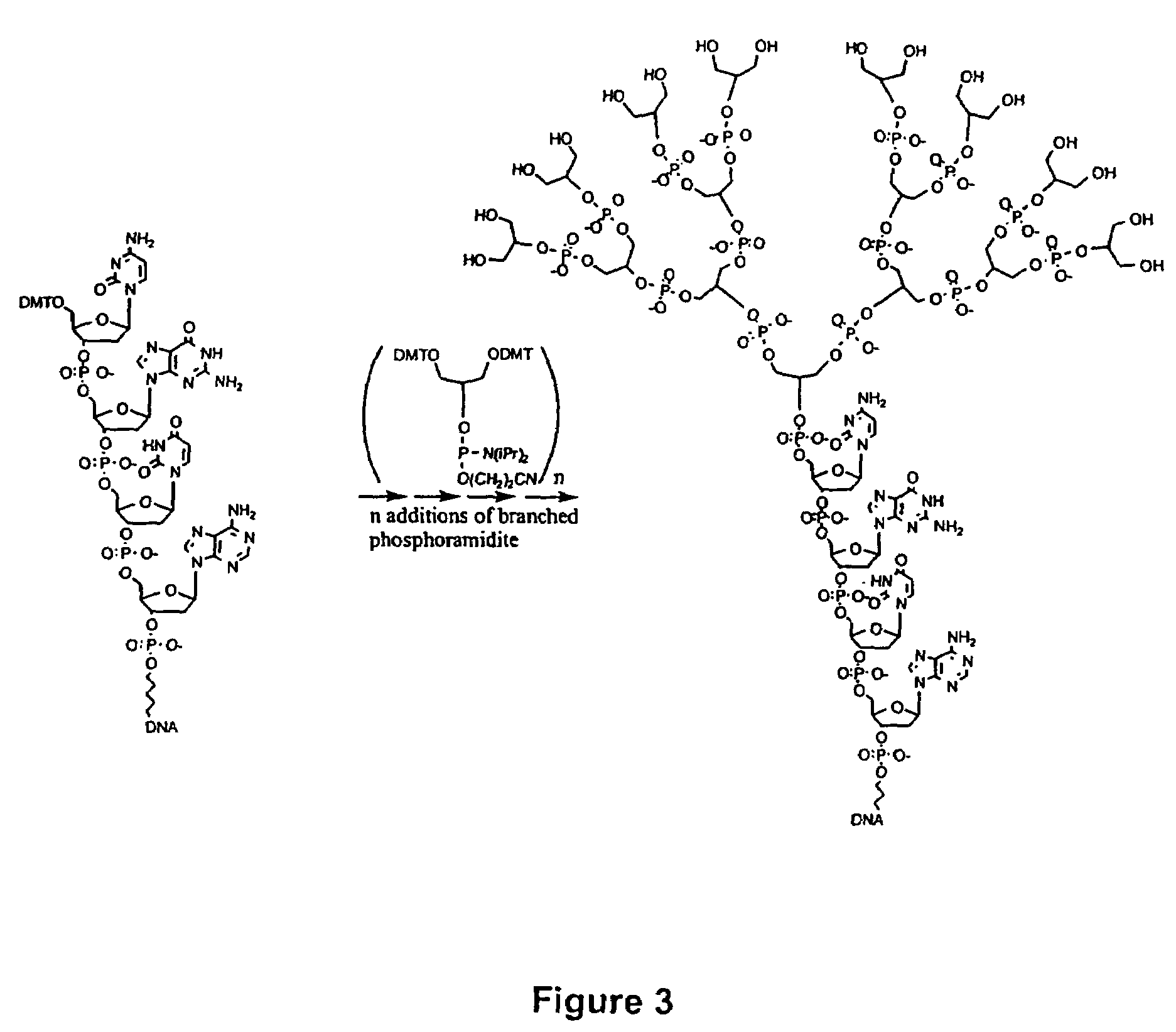Hydrazide building blocks and hydrazide modified biomolecules
a technology of hydrazide and building blocks, applied in biocide, phosphorous compound active ingredients, group 5/15 element organic compounds, etc., can solve the problem of slow reaction rate of immobilization, and achieve the effect of great versatility in the level of possible attachmen
- Summary
- Abstract
- Description
- Claims
- Application Information
AI Technical Summary
Benefits of technology
Problems solved by technology
Method used
Image
Examples
example 1
Synthesis of Various Phosphoramidite Reagents for Adding Hydrazine Attachment Moieties to Macromolecules
[0159]Experiment 1.1 Synthesis of N-Triphenylmethyl-6-hydroxycapronic acid hydrazide, compound 5, (FIG. 9A):
[0160]To a solution of 6.2 g (20 mmol) of tritylhydrazine hydrochloride in 200 ml of THF was added 2.22 g (22 mmol, 1.1 eq) of triethylamine. The solution was stirred at room temperature (rt) for 15 min, filtered, concentrated to afford 3, then treated with 2.29 g (20 mmol, 1 eq) of ε-caprolactone (4). The mixture is heated to 65° C. for 5 h the cooled to rt for 18 h. The precipitate was filtered and recrystallized from ethyl acetate to afford 3.55 g (45%) of a white powder 5: 1H-NMR 7.49–7.47 (m, 5H), 7.35–7.10 (m, 10H), 6.55 (d, J=7.52, 1H), 5.55 (d, J=7.25, 1H), 3.54 (t, J=6.45, 2H), 1.87 (t, J=7.25, 2H), 1.62 (bs, 1H), 1.57–1.34 (m, 4H), 1.27–1.11 (m, 2H).
[0161]Experiment 1.2 Synthesis of 6-[(2Cyanoethoxy)(diisopropylamino)phosphhanyloxy]-N′-tritylhexanohydrazide compund...
example 2
Synthesis of Oligos Using Protected Hydrazide Phosphoramidites
General Synthesis of Oligos with Trityl / MMT / DMT Protected Hydrazide Amidites (e.g. Compounds 1a, 4, 6, 22):
[0199]Oligos (e.g., DNA, RNA, PNA, etc.) are synthesized using solid phase phosphoramidite chemistry on an automated oligo synthesizer. The phosphoramidite with the protected hydrazide is applied as 0.1M solution in acetonitrile and coupled at the desired location in the sequence using standard activated reagents and coupling times.
[0200]The CPG bound oligo (1 mmol) is placed in a 1.5 ml test tube and treated with 2.0 ml conc. NH4OH. After 2 h at 55° C. the ammonia solution is removed and evaporated to dryness under reduced pressure. The residue is dissolved in 1 ml water and filtered through a 0.45 μm syringe filter. The trityl protected hydrazide oligo is purified by reverse phase HPLC, as described for the experiments. The fractions containing the trityl-on product were pooled and evaporated to dryness.
[0201]For t...
example 3
Synthesis of Oligos Using Hydrazide Ester Precursor Phosphoramidites
General In Situ Generation of Hydrazide Functionality Synthesis of Oligos Using Phosphoramidites Containing Precursor Forms (e.g., Esters Such as Compound 1b FIG. 9B, Scheme 2; See also FIG. 17B):
[0211]Oligos are synthesized using solid phase phosphoramidite chemistry on an automated oligo synthesizer. The phosphoramidite with the precursor form of the hydrazide is applied as 0.1 M solution in acetonitrile and coupled at the desired location in the sequence using standard activating reagents and coupling times. The use of a phosphoramidite that contains a hydroxyl group labeled with an acid-labile protecting group as well as a hydrazide precursor allows the introduction of the hydrazide at any position of the oligo because the precursor form of the hydrazide is stabile to the conditions of the oligo synthesis while the reactive hydrazide is not formed until incubation with hydrazine.
[0212]The CPG bound oligo (1 mmol...
PUM
| Property | Measurement | Unit |
|---|---|---|
| current densities | aaaaa | aaaaa |
| pH | aaaaa | aaaaa |
| pH | aaaaa | aaaaa |
Abstract
Description
Claims
Application Information
 Login to View More
Login to View More - R&D
- Intellectual Property
- Life Sciences
- Materials
- Tech Scout
- Unparalleled Data Quality
- Higher Quality Content
- 60% Fewer Hallucinations
Browse by: Latest US Patents, China's latest patents, Technical Efficacy Thesaurus, Application Domain, Technology Topic, Popular Technical Reports.
© 2025 PatSnap. All rights reserved.Legal|Privacy policy|Modern Slavery Act Transparency Statement|Sitemap|About US| Contact US: help@patsnap.com



